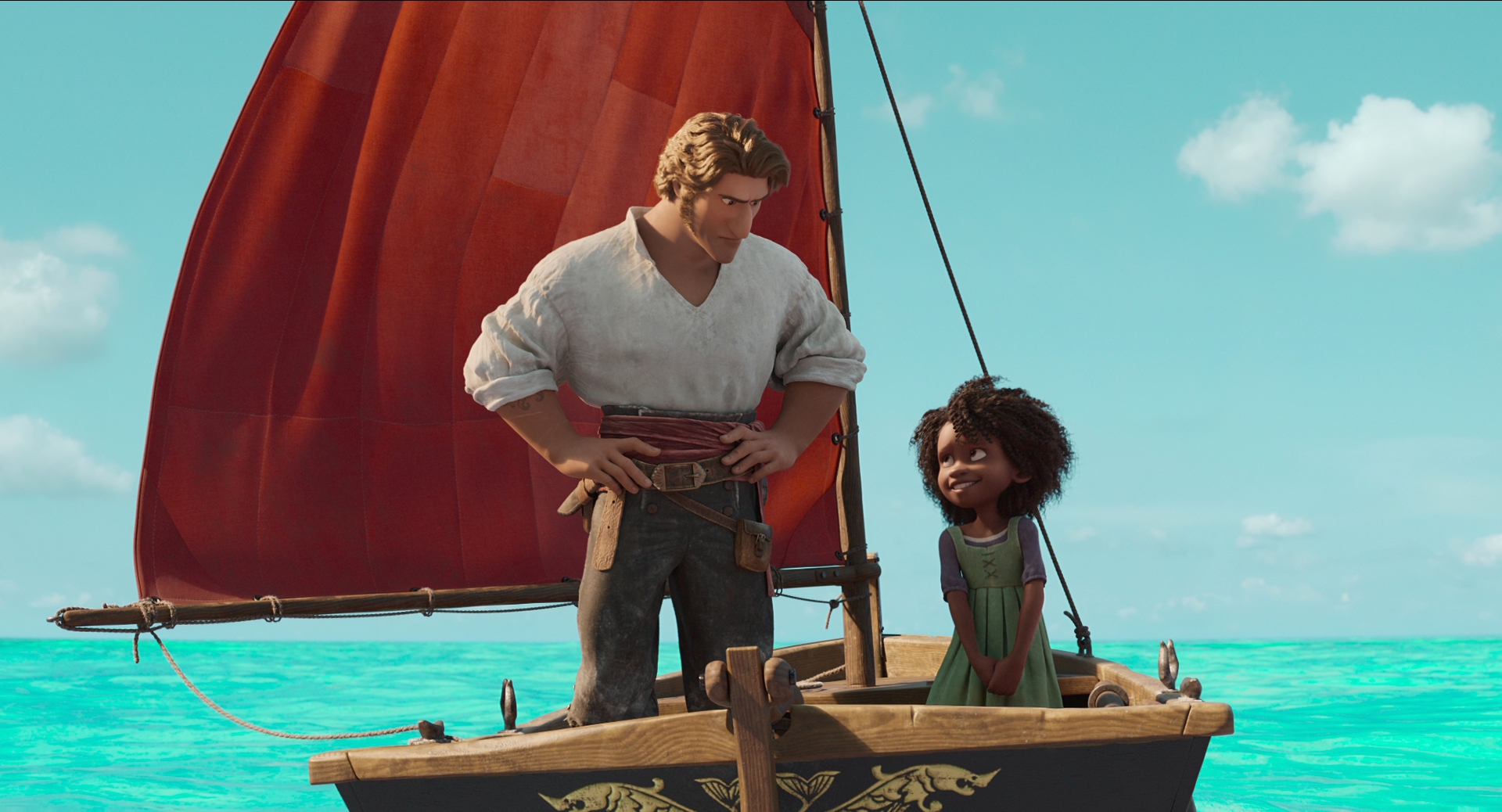The Sea Beast offers fun—and complexity—for seafarers of all ages
Big Hero 6 director Chris Williams tackles thought-provoking ideas while delivering a rousing, colorful adventure

In a genre where “family friendly” is usually a functional synonym of “for kids,” The Sea Beast is something of a rarity in modern feature animation. Despite superficial elements—like the film’s treatment of alcohol—that indicate a more childlike treatment of its subject matter, the film handles its more mature themes in a way that invites introspection from both younger and older viewers. Meanwhile, it helps that that the film as a whole is an intricately entertaining high-seas adventure, packed with memorable characters and some of the best animated action in years.
Set in a fantastical world where sea monsters prowl off the coast of a nearby human kingdom, The Sea Beast follows the exploits of a ship of bounty-seeking sailors who kill monsters to harvest their horns. Serving under the vengeance-obsessed Captain Crow (Jared Harris), senior crewman and adopted son Jacob Holland (Karl Urban) assists in the perpetual hunt of the most dangerous monster in all the sea: The Red Bluster. However, the local monarchy is prepared to halt the practice of monster hunting to bring it under the provenance of their navy, inciting a contest where the first ship to capture The Red Bluster will be allowed to continue the practice. But when star-struck orphan Maisie Brumble (Zaris-Angel Hator) sneaks aboard Captain Crow’s ship in hopes of taking a place among the crew, both Maisie and Jacob come to realize that the monsters might not be exactly what they’ve spent their whole lives being led to believe.
Directed by Big Hero 6’s Chris Williams, with a screenplay co-written by Williams and Nell Benjamin, the film is a gorgeous feat of animation, particularly in scenes of swashbuckling action. The choppy waves of the sea are gorgeously rendered, as Williams’ camera swings around with graceful urgency during nautical battles. The sheer physical inventiveness of the action set pieces delivers the kind of absorbing spectacle that causes one to inch toward the edge of their seat. In short, when The Sea Beast is in full-on action mode, it’s a blast, and an impressive accomplishment when you consider how the animation team worked in COVID-mandated isolation for much of the film’s three-year production schedule.
Less consistent are the film’s character designs, which vary noticeably in terms of stylization. The crew of Captain Crow’s Inevitable fares the best, with angular and exaggerated facial features that make even nameless background characters interesting to look at, as if each of them has a story to tell. Contrasted with land-bound extras, especially children and Maisie herself, there’s a smoothed-over quality to their features that feels reminiscent of modern Disney. Neither artistic choice is inherently flawed in itself; the issue comes from the juxtaposition, which may have been intended to draw distinction between the worldly, rough-and-tumble hunter lifestyle and the isolated domesticity of the kingdom, but it ultimately makes the two brands of character model feel as if they should exist in different films.
